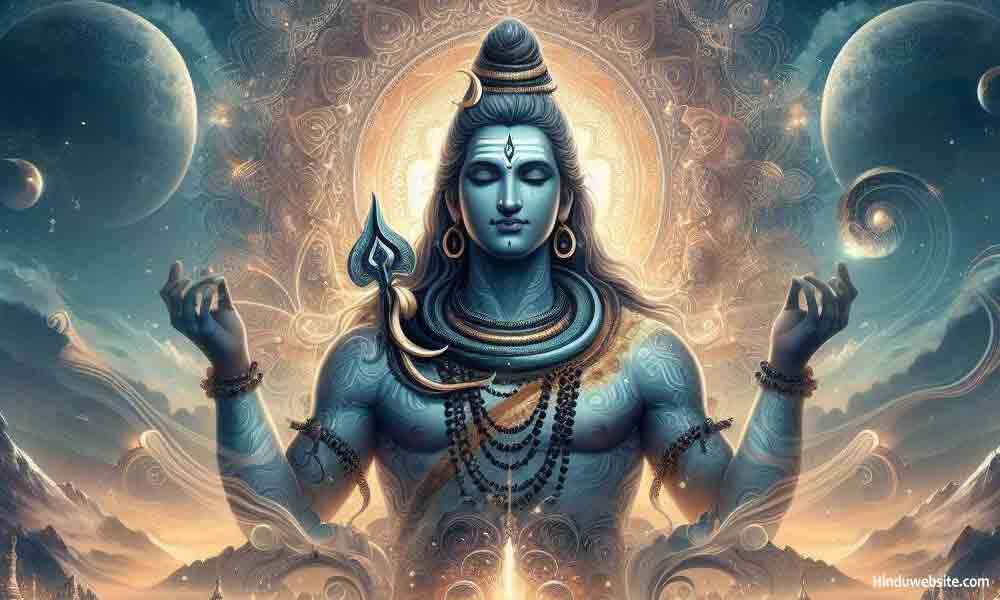
What is the Significance of Shiva Jagarana on Maha Shivaratri?

Some festivals are meant for celebration, some are meant for practicing austerities, and in some, we combine both. Maha Shivaratri falls under the third category. On that day, devotees celebrate the origin of Shivalingam, observe the whole day fast, and keep an all-night vigil or jagaran. Lord Shiva is one of the most ancient gods of Hinduism, if not the oldest. He is venerated in Shaivism as the highest Supreme Brahman. He is also extolled as Brahman in the Kena and Svetasvatara Upanishads. The practice of observing fast on Maha Shivaratri is as old as Shaivism.
Jagarana (jāgaraṇa) or jagaran is not unique to Shaivism. It is practiced in Hinduism on auspicious occasions to venerate Hindu deities, especially Lord Shiva, Durga, and Lord Krishna. On the day of Maha Shivaratri, Lord Shiva’s devotees fast (upavasam) and do not sleep for the whole day and night. They break the fast after midnight or in the early morning. During this time, they engage in various devotional activities such as ritual worshiping, singing, dancing, and reminiscing stories of Shiva’s opulence from the Puranas. Many also visit temples and participate in a special ceremony called Lingodbhavam to mark the emergence of Shivalingam as an infinite pillar of light without a beginning or an end, which established Shiva as none other than Brahman. The practice is associated with the belief that anyone who fasts on that auspicious day and remains awake all night will attain the heavenly world of Kailasa, even if one has committed the worst sins. This is an ancient Shaiva tradition practiced for centuries and continues even now.
What is the significance of jagaran? Why do devotees fast and remain awake on that day? The answer is simple. Lord Shiva is an ascetic god. Fasting and controlling sleep are austerities or ascetic practices. Therefore, they are the best practices to impress him and earn his grace. Secondly, Lord Shiva is also the Lord of tamas, one of the triple gunas of Prakriti, which is responsible for desire-ridden actions and the impurities of egoism and delusion. It is the most impure guna that induces lethargy, inertia, sleepiness, laziness, and evil passions such as anger, lust, envy, pride, and fear. Tamasic people are also stubborn, narrow-minded, and difficult to persuade. They are also prone to consume intoxicating materials such as alcohol and drugs. Because tamas clouds the consciousness and prevents people from discerning truths, tamasic people remain under the full control of Maya or the lower shaktis of Shiva.
The influence of tamas can be overcome by worshipping Lord Shiva and earning his grace. Hence, there is no better opportunity than worshipping him with exclusive devotion on the day of Maha Shivaratri, practicing self-control with austerities such as observing cleanliness, fasting, and remaining awake. Thus, the purpose of jagaran is to gain control over the mind and body and not let tamas influence them and induce inertia or sleepiness or induce evil passions such as lust and anger. Truly, no one can attain liberation by just remaining awake for one day in a year or a few days in a year.
It must be considered the starting point of the spiritual journey that leads the devotees to the doors of Kailasha, the transcendental state of Shiva’s pure consciousness, by attaining which they are permanently free from rebirth and suffering. The goal of a Shiva yogi is to become like Shiva, attaining his pure consciousness of Shiva consciousness. It has to be achieved through the four stages of attaining ananya bhakti (exclusive devotion), mantra siddhi (realization of the mantra), bhuta siddhi (control over the body), and kriya siddhi (control over actions). They can be attained by the regular practice of hearing about the opulence of Shiva (sravanam), remembering Shiva or Shiva mantras (mananam), and contemplating upon him to establish the mind in him (nidhidhyasana). The grace of the guru or Shiva also helps in attaining oneness (kaivalyam) or Shiva consciousness.
Suggestions for Further Reading
- Symbolic Significance of Maha Shivaratri
- Ten Reasons Why You Should Worship Shiva
- Navaratri - The Hindu Festival
- Mantra and Yoga
- Notes on Shiva Lingam
- The Concept of Sahaja Vidya in Trika or Kashmiri Shaivism
- Lord Shiva as Isvara, the Manifested Brahman
- What is the Truth About Shiva's Essential Nature?
- Shiva the Unconventional God of Opposites
- Significance of Lord Shiva
- Methods of Worship in Shaivism
- Hindu God Lord Shiva (Siva) - the Destroyer
- The Symbolism of Snakes and Serpents in Hinduism
- Essays On Dharma
- Esoteric Mystic Hinduism
- Introduction to Hinduism
- Hindu Way of Life
- Essays On Karma
- Hindu Rites and Rituals
- The Origin of The Sanskrit Language
- Symbolism in Hinduism
- Essays on The Upanishads
- Concepts of Hinduism
- Essays on Atman
- Hindu Festivals
- Spiritual Practice
- Right Living
- Yoga of Sorrow
- Happiness
- Mental Health
- Concepts of Buddhism
- General Essays